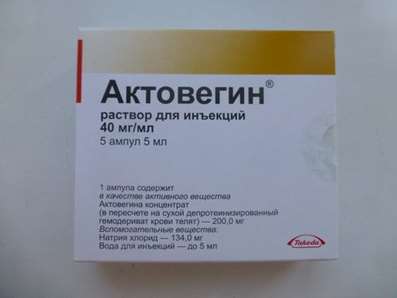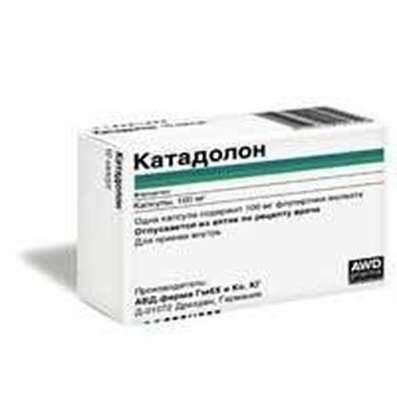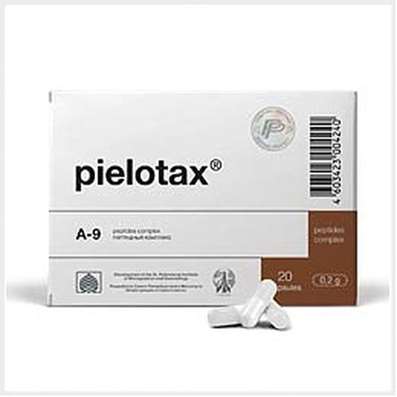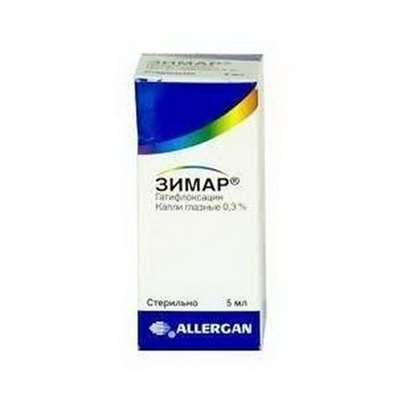Instruction for use: Anvifen
I want this, give me price
Trade name of the drug – Anvifen
Active substance: Amino-phenyl-butyric acid (Acidum aminophenylbutyricum)
Dosage Form: capsules
Composition
(per capsule):
Active substance: Amino-phenyl-butyric acidhydrochloride - 25 mg or 50 mg, or 125 mg, or 250 mg.
Excipients: giproloza, colloidal silicon dioxide, lactose, magnesium stearate.
hard gelatin capsule contains: 25 mg for the dosage - water, gelatin, methyl parahydroxybenzoate, propyl parahydroxybenzoate, titanium dioxide (E 171); Dosing 50 mg - water, gelatin, azorubin dye (E 122), brilliant blue dye (E 133), quinoline yellow dye (E 104), methyl parahydroxybenzoate, propyl parahydroxybenzoate, titanium dioxide (E 171); for the dosage of 125 mg - water, gelatin, azorubin dye (E 122), brilliant blue dye (E 133), methyl parahydroxybenzoate, propyl parahydroxybenzoate, titanium dioxide (E 171); for dosing of 250 mg - water, gelatin, dye azorubin (E 122), brilliant blue dye (E 133), methyl parahydroxybenzoate, propyl parahydroxybenzoate, titanium dioxide (E 171).
Description
Dosage 25 mg - 3 capsules No white.
Dosage 50 mg - Capsules No 3, the body is white, blue cap.
The dosage of 125 mg - 2 No capsules, body in white, blue cap.
The dosage of 250 mg - Capsules No 0, body white, cover in dark blue.
The contents of capsules - a mixture of powder and / or granules of white or white with a yellowish tinge.
Pharmacotherapeutic group:
Anxiolytic (tranquilizer), nootropics
ATX Code
N05BX Anxiolytics other
The nosological classification (ICD-10)
F06.6 Organic emotionally labile [asthenic] disorder: asthenic disorders; asthenic conditions; asthenic violation; asthenic disorders; asthenic conditions; asthenic phenomenon; asthenic violation; Asthenic-depressive disorder; Asthenoneurotic state; Asthenic-depressive disorder; Asthenic-depressive state;
Asthenic-hypochondriac phenomena; Asthenoneurotic disorder; Hypochondriacal and asthenic-hypochondriac state; Organic asthenic-depressive disorder; Psycho-asthenic-like disorder.
F10.3 abstinence: Alcohol withdrawal syndrome; abstinence symptom; Abstinence syndrome in alcoholism; abstinence; alcohol abstinence; alcohol withdrawal; Alcohol abstinence; Alcohol withdrawal syndrome; withdrawal disorder; withdrawal state; alcohol withdrawal syndrome; withdrawal syndrome; The syndrome of alcohol abstinence; alcohol withdrawal syndrome; Status of abstinence.
F41.9 Anxiety disorder, unspecified: Severe anxiety; neurosis-like symptoms; neurosis-like disorder; neurosis-like state; Neurosis with anxiety symptoms; Neurosis with anxiety; Neurotic disorders with anxiety syndrome; The acute situational stress and anxiety; The acute situational stress anxiety; Acute anxiety attack; Depressed mood with anxiety elements; Psychopathy with a predominance of anxiety and worry; Sudden anxiety; Situational Anxiety Disorder; An anxiety condition; Soest; Anxious-delirium;
Disturbingly delusional component; anxiety; Anxiety; anxiety disorder; Anxiety disorders; Anxiety disorders in neurotic and neurosis-like states; Anxiety syndrome; Chronic neurotic anxiety; Sense of anxiety.
F48.9 Neurotic disorder, unspecified: Secondary neurotic symptom; Other neurotic state; Neurosis; Neurosis with increased irritability; Neuroses; Neuroses of all kinds; Neuroses with inhibition; neuroses of the heart; Neurotic disorders in alcoholism; Neurotic disorders with inhibition; Neurotic disorders with anxiety syndrome; Neurotic reactions; Neurotic symptoms of alcoholism; Neurotic state; The neurotic syndrome; neurotic disorders; The attack of neurological dysfunction; School neurosis; Emotional stress.
F95.9 Tics unspecified: generalized tics; Coprolalia.
F98.0 Enuresis inorganic nature: Children's enuresis; Urinary incontinence; Urinary incontinence; etiology nonhormonal; Urinary incontinence inorganic etiology; Functional enuresis in children.
F98.5 Stuttering [hesitation]: Stuttering; Stuttering and other speech defects in children; Clonic form of stuttering; logoneurosis.
G47.0 Disorders of falling asleep and maintaining sleep [insomnia]: Insomnia; Insomnia, especially difficulty falling asleep; desynchronosis; Prolonged sleep disturbance; Difficulty falling asleep; Difficulty falling asleep; Difficulty falling asleep; insomnia; Short-term and transient insomnia; Short-term and chronic sleep disorders; Short or shallow sleep; Violation of sleep; Disturbed sleep, especially in the phase of falling asleep; Infringements sleep; sleep disturbances; Neurotic sleep disturbance; Shallow superficial sleep; shallow sleep; Poor quality of sleep; Night awakening; Night waking; Sleep Pathology;
Postsomnic violation; transient insomnia; Trouble falling asleep; Early awakening; Early morning awakening; Early awakening; sleep disorder; somnipathy; persistent insomnia; difficult to fall asleep;
difficulty falling asleep; Difficulty falling asleep in children; persistent insomnia; Worsening sleep; Chronic insomnia; Frequent night and / or early morning awakening; Frequent nocturnal awakening and feeling shallow sleep.
H81.0 Ménière's Disease: Disease / Meniere's syndrome; Labyrinth dropsy; Meniere's disease; Meniere's syndrome; endolymphatic hydrops.
H81.4 Vertigo of central origin: vestibular vertigo; Vertigo labyrinthine origin; Vertigo of vascular origin.
H81.9 Violation of vestibular function, unspecified: vestibular nystagmus; Ischemic disorders of hearing and balance; Cochle-vestibular disorder; Cochle-vestibular syndrome of vascular origin; Labyrinth, vestibular disorders; Labyrinth disorders; Violation of the microcirculation in the maze.
T75.3 Motion sickness when moving: air Sickness; motion Sickness; seasickness; Airsickness; kinetoses; Seasickness; The symptom of motion sickness; motion sickness syndrome; kinesia.
Pharmacological PropertiesPharmachologic effect
Mode of action - antioxidant, anticonvulsant, nootropic, anxiolytic, antiplatelet.
Nootropic agent facilitates GABA-mediated neurotransmission in the central nervous system (direct effects on the GABA-ergic receptors). Tranquilizing effect combined with an activating effect. It also has antiplatelet, antioxidant and some anticonvulsant effects.
It improves the functional state of the brain due to the normalization of metabolism and its effect on cerebral blood flow (increased volumetric and linear speed, reduces vascular resistance, improves microcirculation, has antiplatelet effect). It extends the latent period and shortens the duration and severity of nystagmus.
No effect on choline and adrenergic receptors. Reduces vasovegetative symptoms (including headache, a feeling of heaviness in the head, sleep disturbances, irritability, emotional lability). In exchange reception improves physical and mental performance (attention, memory, speed and accuracy of sensory-motor reactions).
It reduces the symptoms of fatigue (improves mood, increases the interest and initiative (motivation activities)) without sedation or excitation. Reduces feelings of anxiety, tension and anxiety, normalizes sleep.
In the elderly does not cause depression of the central nervous system, muscle-relaxing-effect often absent.
Pharmacokinetics
High absorption, good penetration into all tissues of the body and the BBB (brain tissue penetrates about 0.1% of the administered dose, and in young and elderly patients are much more). Evenly distributed in the liver and kidneys. It is metabolized in the liver - 80-95%, the pharmacologically inactive metabolites. Not accumulates. After 3 hours, the kidneys starts output while the concentration in the brain tissue and is found not reduced for a further 6 hours about 5% is excreted unchanged by the kidneys partially -. With bile.
Indications for Anvifen
- asthenic and anxious-neurotic condition;
- stuttering, tics, and enuresis in children;
- insomnia, night anxiety in the elderly;
- Meniere's disease, vertigo associated with dysfunction of the vestibular apparatus of various origins;
- Prevention of motion sickness when kinetoses;
- in the complex therapy of alcohol withdrawal syndrome for relief of psychopathological and somatic-vegetative disorders.
Contraindications for Anvifen
- hypersensitivity;
- pregnancy;
- breastfeeding;
- age up to 3 years.
Anvifen Dosage and Administration
Inside, after eating, 2-3-week course.
Adults and children from 14 years - 250-500 mg 3 times daily (maximum daily dose - 2500 mg). Children 3-8 years - 50-100 mg three times a day; 8 - 14 - 250 mg 3 times a day.
The single maximum dose in adults and children 14 years of age is 750 mg in patients over 60 years - 500 mg, for children up to 8 years - 150 mg, from 8 to 14 years - 250 mg.
Alcohol withdrawal syndrome: 250-500 mg 3 times a day and 750 mg at night, with a gradual decrease in the daily dose to adult normal.
Treatment of vertigo with vestibular dysfunction and Meniere's disease: 250 mg 3 times a day for 14 days.
Prevention of motion sickness: 250-500 mg once daily, 1 hour before the expected start of the pitching, or when the first symptoms of seasickness.
Antiseasick Anvifen action of the drug increases with increasing dose. When the express manifestation of motion sickness (vomiting, etc.), use of the drug is ineffective Anvifen even at doses of 750-1000 mg.
Side effect of Anvifen
Drowsiness, nausea. Increased irritability, agitation, anxiety, dizziness, headache (with the first receptions), and allergic reactions.
Overdose of Anvifen
Symptoms: severe drowsiness, nausea, vomiting, hepatic steatosis (receiving more than 7 g), eosinophilia, decreased blood pressure, renal function.
Treatment: gastric lavage, the appointment of activated charcoal and symptomatic therapy.
Interaction
It extends and enhances the effect of hypnotics, narcotic analgesics, antipsychotics, antiparkinsonian and antiepileptic agents.
SPECIAL INSTRUCTIONS
With prolonged use is necessary to periodically monitor the performance of the liver and peripheral blood functions.
Effects on ability to drive and use machines. It should refrain from potentially hazardous activities that require high concentration.
Release Form
Capsules 25 mg, 50 mg, 125 mg, 250 mg.
10 capsules a dosage in blisters.
1, 2, 3 or 5 contour cell package together with instructions for use in a stack of cardboard.
Storage conditions
List B. In a dry, dark place at a temperature no higher than 25 ° C. Keep out of the reach of children.
Shelf life
3 years.
Do not use beyond the expiration date printed on the package.
Conditions of supply of pharmacies
On prescription.

 Cart
Cart





